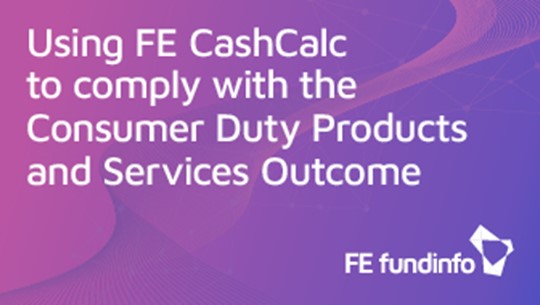We caught up with Barry Davys, Partner at The Spectrum IFA Group, who told us about how FE CashCalc has changed the way he approaches cashflow planning with his clients and how valuable it has been in bringing his clients' goals to life. Watch the video or read on to find out what he said.
Realising the impact of cashflow modelling
Whilst cashflow modelling is widely used by advisers to aid the advice process, it is often used as a means to an end: working out how much money clients have now, how much they could have in the future, and whether it will be enough.
Barry begins by telling us that this was his mindset when he first started using FE CashCalc – until one day when the graph showed his client running out of money. “He was just simply going to run out”, Barry reflects.
Fortunately, the client was in his early fifties and wasn’t due to run out until his late 70s, so there was time to pivot the approach. By making simple changes, Barry was able to change the graph from the dreaded red, to being green right the way up to age 100: effectively changing the trajectory of the client’s financial future.
It was this situation that made Barry appreciate the power of cashflow modelling and the significant impact it can have on a client’s life, saying that that was when he realised that “showing and demonstrating what happened could actually change this chap's life.”
Selling a business to retire
In his next example, Barry tells us about a couple running a bed and breakfast who had been struggling financially following the pandemic. They came in for a meeting to look over their financial plan, which was to retire in three years, and everything was on track, but Barry could tell that they had had enough.
By utilising FE CashCalc’s visual cashflow models that could be updated there and then in front of the clients, Barry demonstrated a scenario in which they could retire immediately: by selling their business for €1.5m.
It turned out that the couple had received an offer for close to that amount, but they had thought they would need more. By using a clear cashflow model, Barry was able to reassure them that this amount would be enough, allowing them to retire much earlier than they had previously expected.
Making the most of accumulated wealth
One of the biggest differences between the traditional approach to cashflow planning and a goal-based approach is the perspective in which wealth is viewed. With a traditional approach, the primary aim is often accumulating and preserving wealth, whilst a goal-based approach focusses much more on the purpose and meaning of wealth.
This leads into Barry’s next anecdote, where a cashflow model was not only used to demonstrate that a client could retire immediately, but also double his expenditure and still live comfortably.
This epitomises the significant power of cashflow planning, as instead of blindly accruing and preserving wealth for fear of running out in retirement, a detailed cashflow model can provide the data needed to not only reassure clients that they will have enough in their later years, but empower them to make the most of, and enjoy, their hard-earned wealth.
Supporting vulnerable clients
One of the benefits of a cashflow model is the visual and easy-to-understand format, and the resulting reassurance that this provides for clients – particularly those who may be vulnerable.
Barry’s final example really demonstrates this, as he tells us about an elderly client whose husband had recently passed. Prior to his death, her husband had handled everything financial, and she was “absolutely terrified’” By going through different scenarios and their outcomes, Barry could effectively illustrate her financial future, and assure her that she was going to be ok.
This was a powerful moment for Barry, and he recounts how he could “actually feel and see the terror just drain away from her”, leading him to his concluding quote:
”The really important thing with it is the outcomes that the clients get from it. And because they understand it, because it's graphical, it has meaning for them. So for clients, [and] for me, with my relationship with clients, it's very, very special.”


